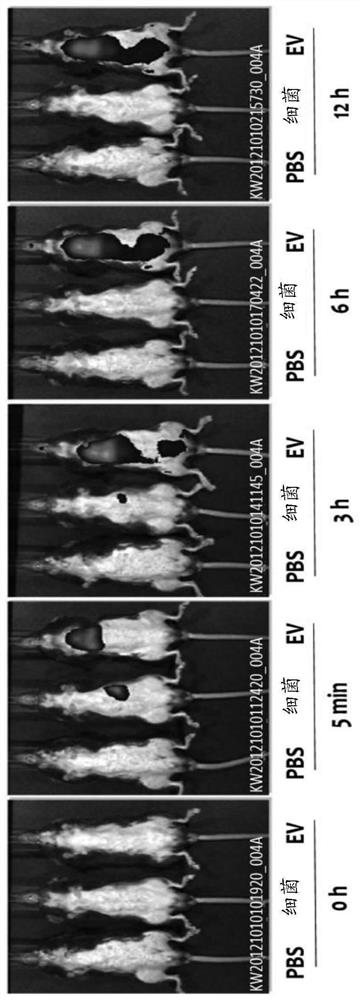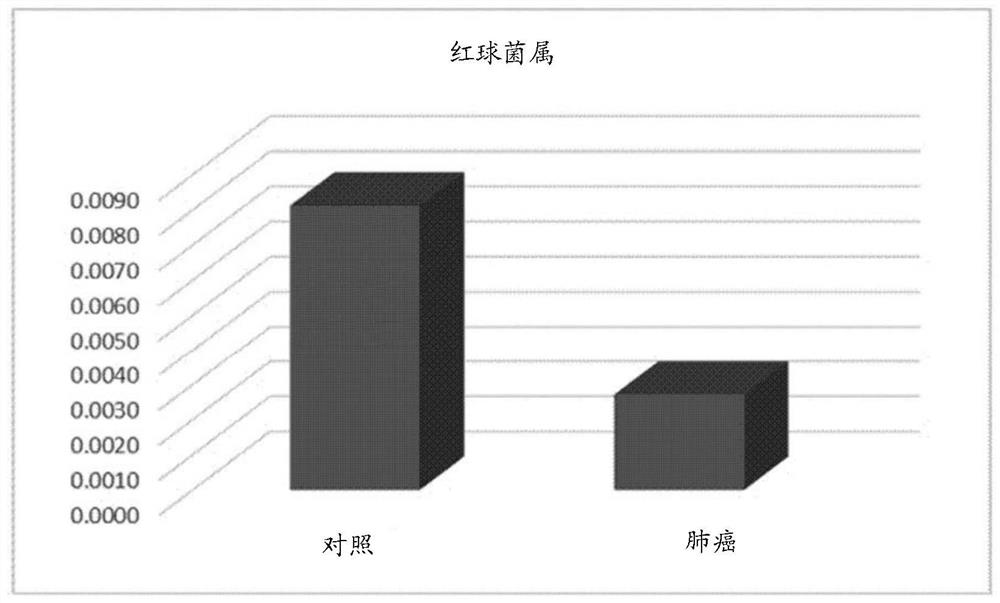Nanovesicles derived from bacteria of genus rhodococcus, and use thereof
A technology of Rhodococcus and vesicles, which is applied in the direction of bacteria-derived medical raw materials, skin care preparations, microbial measurement/testing, etc., and can solve the problems of unreported Rhodococcus bacteria secreting vesicles, unreported diagnostic and therapeutic applications Case and other issues
- Summary
- Abstract
- Description
- Claims
- Application Information
AI Technical Summary
Problems solved by technology
Method used
Image
Examples
Embodiment 17
[0103] Hereinafter, preferred embodiments to facilitate understanding of the present invention will be presented. However, the following examples are provided only for easier understanding of the present invention, and the content of the present invention is not limited by the following examples.
Embodiment 1
[0105] Example 1. Analysis of In vivo Absorption, Distribution and Excretion Patterns of Gut Bacteria and Bacteria-Derived Vesicles
[0106] To assess whether bacteria and vesicles derived from bacteria are absorbed systemically through mucus, the following experiments were performed. First, a dose of 50 μg of each of fluorescently labeled enterobacteria and vesicles derived from enterobacteria was administered to the stomach of mice, and the Fluorescence was then measured. As a result of observing the whole image of the mouse, as Figure 1A As shown, the bacteria were not absorbed systemically, but vesicles derived from the bacteria were absorbed systemically at 5 minutes after administration, and strong fluorescence was observed in the bladder 3 hours after administration, making it possible to see that the vesicles were excreted into the urine road. Furthermore, it can be seen that the vesicles are present in vivo until 12 hours after administration (see Figure 1A ). ...
Embodiment 2
[0108] Example 2. Metagenomic Analysis of Bacterial-Derived Vesicles in Clinical Samples
[0109] After first putting blood or urine into a 10 ml tube and sedimenting the suspension by centrifugation (3,500 xg, 10 min, 4°C), only the supernatant was transferred to a new 10 ml tube. After removing bacteria and impurities using a 0.22-μm filter, transfer them to a Centriprep tube (centrifugal filter 50kD) and centrifuge at 1,500×g and 4°C for 15 minutes, discard the material smaller than 50kD, and the residue Concentrate to 10ml. After bacteria and impurities were removed again using a 0.22-μm filter, supernatant was discarded and aggregated pellets were dissolved by performing ultracentrifugation at 150,000×g and 4°C for 3 hours using a 90Ti type rotor in normal saline (PBS).
[0110] 100 μl of vesicles isolated by the method described above were boiled at 100 °C to extract internal DNA from lipids, and then cooled on ice for 5 min. Then, in order to remove residual suspen...
PUM
 Login to View More
Login to View More Abstract
Description
Claims
Application Information
 Login to View More
Login to View More - R&D
- Intellectual Property
- Life Sciences
- Materials
- Tech Scout
- Unparalleled Data Quality
- Higher Quality Content
- 60% Fewer Hallucinations
Browse by: Latest US Patents, China's latest patents, Technical Efficacy Thesaurus, Application Domain, Technology Topic, Popular Technical Reports.
© 2025 PatSnap. All rights reserved.Legal|Privacy policy|Modern Slavery Act Transparency Statement|Sitemap|About US| Contact US: help@patsnap.com



